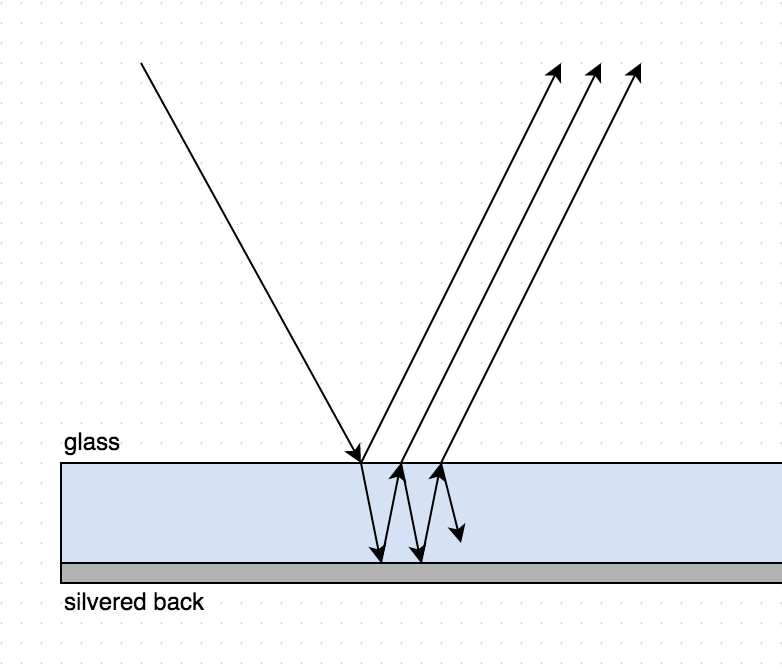Looking in the mirror
 When you look at yourself in a plane glass mirror, what do you see?
When you look at yourself in a plane glass mirror, what do you see?
Details and assumptions:
-
The mirror is made of glass and is silvered on the back surface.
-
Don't consider reflections in your eye/other mirrors
-
Ignore total internal reflection(s), if any.
This section requires Javascript.
You are seeing this because something didn't load right. We suggest you, (a) try
refreshing the page, (b) enabling javascript if it is disabled on your browser and,
finally, (c)
loading the
non-javascript version of this page
. We're sorry about the hassle.

A real mirror has two reflecting surfaces, one is the glass surface itself and the other in the silver coating beneath it. Most of the light incident on the mirror goes through the glass and gets reflected by the silver layer. This is the bright image that we see. But if one observes closely, a secondary image is visible. This image is dim and is formed due to direct reflection of incident light from the surface of the glass itself. This secondary image is similar to the reflection we observe in window panes.